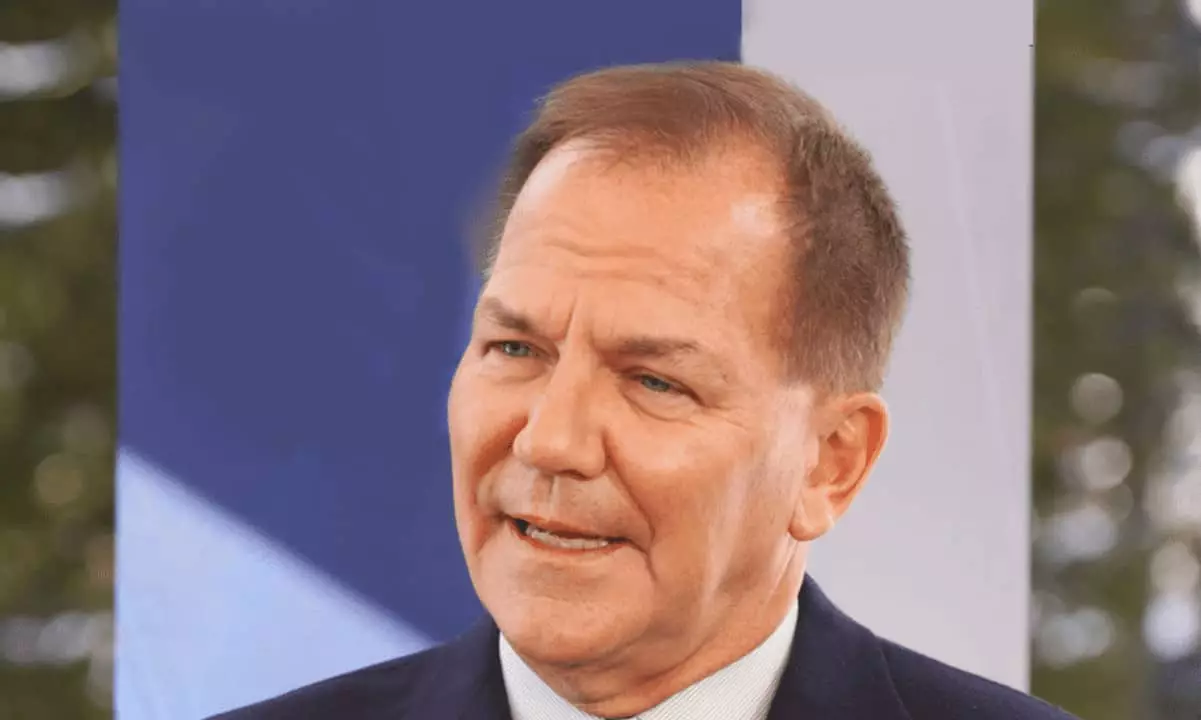In a recent interview with CNBC, billionaire investor Paul Tudor Jones articulated a stark perspective on the current economic climate, suggesting that “all roads lead to inflation.” This assertion comes as no surprise to those closely monitoring the economic indicators following recent global events, including the pandemic and ongoing geopolitical tensions. Jones’s insights serve as a bellwether of shifting investment strategies aimed at navigating this inflationary environment. With inflation acting as a significant disruptor, investors are recalibrating their portfolios to adapt to an evolving financial landscape.
As part of his investment strategy, Jones disclosed that he holds a diversified collection of assets, including gold, Bitcoin, and commodities, while entirely avoiding fixed-income investments. His assertion that commodities are “ridiculously under-owned” highlights a broader trend among investors looking to hedge their portfolios against inflation. By allocating wealth to hard assets like gold and digital assets like Bitcoin, Tudor Jones is leveraging their potential to preserve value amid currency devaluation. This diversification represents a fundamental shift in traditional investment paradigms, reflecting a growing consensus that tangible and decentralized assets may offer more stability compared to conventional options.
The commentary from prominent figures within the cryptocurrency space, such as Anthony Pompliano, emphasizes the importance of institutional endorsement. Pompliano’s lighthearted remark about Jones’s investment choices hints at the broader implications such endorsements can have on public perception and market dynamics. Platforms like X (formerly Twitter) are buzzing with discussions about the role of decentralized assets in combating inflation, suggesting a burgeoning interest in alternative investment vehicles driven by economic unpredictability.
As the market responded to Jones’s revelations, Bitcoin experienced notable fluctuations, briefly nearing its peak price before settling around $67,000. Meanwhile, gold prices surged to an unprecedented $2,750, representing a remarkable 33% increase for the year. Silver, too, witnessed a resurgence, reaching heights not seen since 2012 and appreciating by over 46%. These developments underline a broader trend favoring tangible assets as investors seek refuge from the inflationary pressures that impact purchasing power and economic stability.
Jones pointed to persistent inflation as a critical factor that will likely dictate the monetary policy landscape. He argued that regardless of the actions taken by central banks to mitigate inflation, challenges such as the debt-to-GDP ratio must be addressed comprehensively. The staggering 120% debt-to-GDP ratio in the U.S. underscores the precarious position of the economy and highlights the potential for high inflation to hinder capabilities in responding to economic shocks.
The Central Bank’s Narrative vs. Reality
Interestingly, while Jones paints a bleak picture, institutions like the International Monetary Fund (IMF) have a contrasting narrative, suggesting that the “battle against inflation is largely won.” This disparity raises questions about the accuracy of macroeconomic forecasts and the gulf between official statements and the lived experiences of everyday consumers, who continue to grapple with rising costs for essentials such as fuel and food. The disconnect between the IMF’s assessment and the reality of increasing inflationary pressures illustrates a significant challenge for policymakers attempting to navigate the complexities of a post-pandemic global economy.
Future Considerations for Investors
The macroeconomic landscape implies that investors must remain agile, adapting their strategies to the evolving conditions shaped by inflation, debt levels, and central bank reactions. As evidenced by Jones’s approach, incorporating decentralized and tangible assets may offer a favorable strategy to weather future economic storms. The potential for a “vicious cycle” between debt and inflation suggests that systemic reforms will be essential in fostering long-term economic stability.
The fluctuating investment climate presents both challenges and opportunities for savvy investors. Embracing diversification and acknowledging the importance of resilient assets such as gold and Bitcoin could be pivotal for wealth preservation in these uncertain times. As debates around inflation and its consequences unfold, staying informed and adaptable will be crucial in navigating the financial frontiers of tomorrow.


Leave a Reply